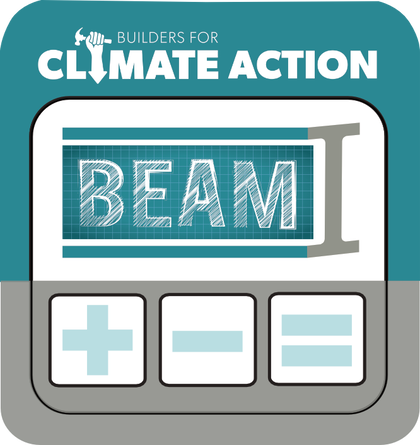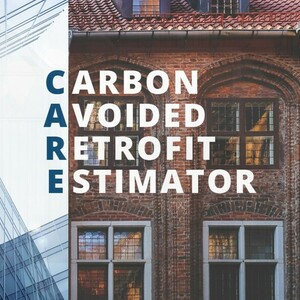
It was two-plus years ago that I first heard of the BEAM Estimator from Chris Magwood, executive director of The Endeavour Centre in Peterborough, Ontario. I recall him saying, “It’s just about ready to launch,” so I kept my eye out—for a long time. And it’s finally here, available for free to all. The team at Builders for Climate Action has been working tirelessly for all that time fine-tuning the Building Emissions Accounting for Materials (BEAM) software, a digital carbon footprint calculator.
“It has taken longer than we thought it would to get BEAM out into the world, but the tool has grown to be much better than we ever could have imagined,” says Magwood of the lengthy wait for public release.
Launched on May 3, 2022, BEAM is the brainchild of a small group of design-build professionals in the low-rise residential sector, who were in search of a tool for measuring the upfront carbon emissions generated by their projects. They sought something “easy to use, intuitive, and comparative,” according to Magwood. It didn’t exist, so they built it.
BEAM’s combined functionalities allow users to make project-specific materials selections, identify materials with the biggest carbon penalty, and find alternatives. Users input the main dimensions of a building and are given a list of available materials for the primary assemblies and the carbon impact of each product. It’s possible to choose materials to create a model of an assembly or a whole building and make side-by-side comparisons between products to arrive at informed, climate-smart decisions.
“We developed BEAM as practitioners for practitioners, and to meet the needs of project teams looking for a quick and easy-to-use manual entry tool, as opposed to a more complex tool designed for larger commercial projects or built off BIM platforms,” says Jacob Deva Racusin, Director of Building Science and Sustainability at New Frameworks. “It was also important for us to make a tool that included many of the carbon-storing and non-conventional materials missing from most tools, as well as one that accounts for material carbon storage.”
The hope is for developers, designers, consultants, and builders to make using BEAM standard practice. The creators envision green-building rating programs and government agencies recommending the tool to program participants.
While initially intended for smaller projects and firms, Deva Racusin says the team has since realized BEAM’s potential in early-phase modeling on larger projects and research studies for large-scale benchmarking, among other applications. He notes, too, that part of BEAM’s value is the ability to see the emissions data for all the available materials in a particular category (for example, exterior wall cavity insulation) at a glance, rather than having to run a full model to get an output.
“We’re excited by the enthusiasm that’s being expressed in the industry for BEAM,” says Magwood. “We’ve already seen the positive changes that have been inspired by the early beta users and are looking forward to seeing that impact broaden.” That optimism is backed by first-hand experience watching people make changes to their specs when they see the associated carbon-output data.
The decision to make BEAM free was carefully considered, as it was largely funded internally by the Centre, a small nonprofit, and monetary payback would have been welcomed for the years and resources put into the effort. But making it free meant its immediate availability to anyone looking to reduce their carbon footprint as quickly as possible, which is the reason it was created. As Magwood puts it: “A climate emergency is no time for paywalls.”
Because BEAM has developed into such a robust tool, the team designed a training course explaining how to use it. It takes three 1-1/2-hour sessions to complete and promises a solid foundation in embodied carbon accounting and strategies for integrating the tool into business practices. For a demonstration on how to use BEAM by Chris Magwood and Jacob Deva Racusin, tune into the BS* + Beer Show on July 7.
______________________________________________________________________
Kiley Jacques is senior editor at Green Building Advisor.
Weekly Newsletter
Get building science and energy efficiency advice, plus special offers, in your inbox.















4 Comments
I was thrilled to see the first public unveiling last week at the Better Buildings conference in VT. I've also been waiting anxiously, as it's a sorely needed and important tool. There's nothing like it for the residential market. It looks very easy to use, with rigorous research behind it. They thought of a lot of little things I wouldn't have, at least not at first--little details that make it easy to "try on" different materials to find the best fit.
They are open about the fact that it's not comprehensive--for example, they said there is little to no solid data on embodied carbon of things like plumbing fixtures and electrical wires. They could have used estimates or approximations but decided to stick with the things they have reliable data for, so you won't get a true accounting of the carbon impact of the entire house, but there are also not a lot of low-carbon options for things like wiring so it's better to focus on the things we can change, such as insulation or foundation types.
I can't wait to hear more about it from Chris and Jacob on BS + Beer on July 7!
Thank you Kiley for highlighting the release of BEAM!! For those interested in a "lunch and learn" tour of the tool, the Vermont Green Building Network will be hosting a BEAM introduction 5/11 at 12p - register here: https://www.eventbrite.com/e/introducing-beam-material-carbon-emission-calculator-tickets-322344540197
Thank you for supporting this work!
The first I have heard of this. Many thanks to the creators for this bit:
"Why is BEAM not behind a paywall?
After much discussion, we decided that BEAM would have the most impact if we did not put it behind a required paywall. In order for BEAM to be adopted by cities and municipalities as their go to embodied carbon compliance tool, we realized that BEAM could not be paywalled. Considering we are in a climate emergency this was the right thing to do."
Chris Magwood explained in a BK webinar that they used Canadian Codes as base code for their studies, so I imagine the classes listed in the BEAM website appear for the Canadian market. Are there any plans for classes geared for the US market? Is it all the same?
Log in or create an account to post a comment.
Sign up Log in